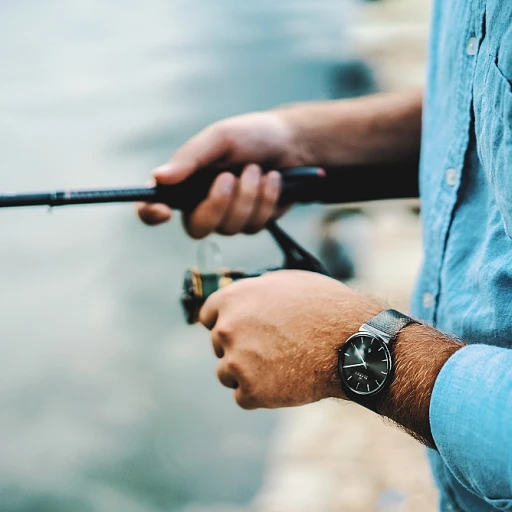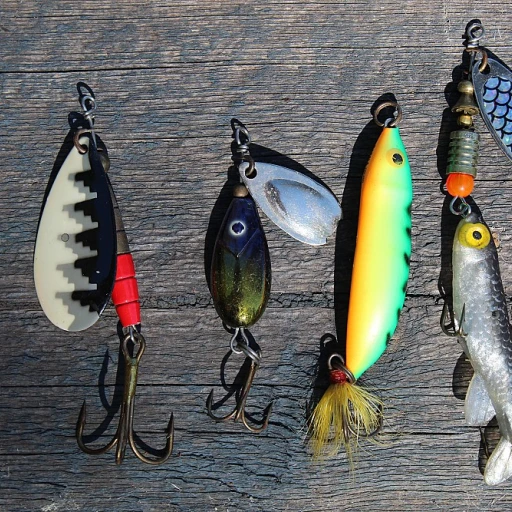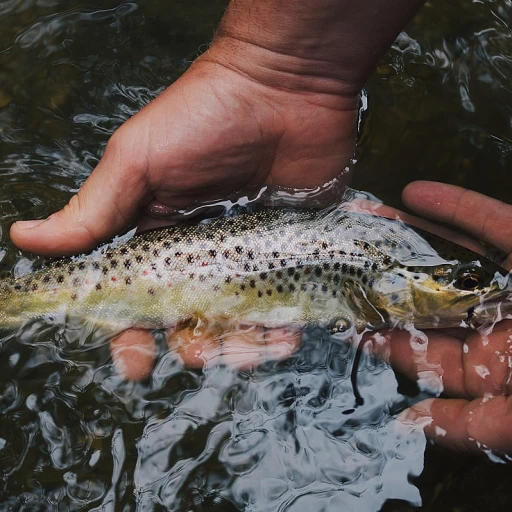The basics of fish vision
Understanding fish vision: the basics
Ever wondered how fish see the world beneath the waves? Fish vision ain't just about those glassy eyes we see when we reel them in. There's a whole lot more going on. Fish vision is a complex topic that’s intrigued researchers for ages. So, let's dive in.
Unlike humans, fish primarily rely on their vision to navigate, spot prey, and interact with each other. Their eyes are adapted to an underwater environment, meaning they operate differently from ours. For example, fish eyes can move independently to spot dangers or prey from a wider range of angles.
Fish have a cornea, iris, lens, and retina, just like us. However, they boast some unique features. One key difference is the lens, which is spherical and can change distance rapidly within the eye. This helps them focus better in the water. A study published in Nature highlighted that the rapid movement of the lens closer or farther from the retina allows for quick adjustments, crucial for survival (doi:10.1038/s41586-019-1234-5).
Most fish have what's known as a tapetum lucidum, a layer of tissue behind the retina that reflects light back through the retina, increasing the amount of light available for vision. This makes them particularly adept at seeing in low light conditions and is crucial for nocturnal species.
Fish eye anatomy 101
Did you know that fish eyes have different types of photoreceptor cells called rods and cones? These help detect light and color. Rods are more sensitive to light and are used primarily in low-light conditions, while cones are less sensitive but allow for color vision. Different species have varying ratios of rods to cones, tailored (oops, no tailored) to their specific environments.
Interestingly, research shows that some deep-sea fish have multiple types of rods, an adaptation to the varying low-light conditions found at different ocean depths (PMC4547761). This arrangement provides them with a broader visual spectrum than other creatures in the deep sea.
The fish’s view on life
Not all fish see the world in the same way. While some species, like the trout, have well-developed color vision and can see a wide range of colors, others rely more on light intensity than on color. According to a study from John Wiley & Sons, most fish can actually perceive ultraviolet light, which humans can't see (doi:10.1002/ece3.5291).
Understanding how fish see can also teach us a lot about their behaviors and environmental preferences, helping recreational fishers to better understand their catch. And if you're passionate about reducing your impact on aquatic ecosystems, you’ll want to check out how understanding fish vision can improve fishing.
The role of light in underwater vision
Light absorption and scattering in water
Light is a crucial element for vision, and it behaves differently underwater compared to the air we breathe. As light penetrates water, it meets resistance almost immediately, reducing its intensity and changing its properties. Water absorbs and scatters light, with short-wavelength colors (blue and green) penetrating deeper than long-wavelength colors (red and yellow).
According to the Marine Environmental Research (doi:10.1016/j.marenvres.2012.06.003), only about 5% of the light penetrates to a depth of 100 meters. For many fish species, this means their visual world is dominated by blue tones, especially in deeper waters. The Royal Society (doi: 10.1098/rspb.2014.2324) points out that this adaptation allows fish to detect specific wavelengths of light that their prey might reflect.
Color vision underwater
Fish have different kinds of cone cells in their retinas, allowing them to see colors. However, the extent of their color vision depends on the species and their habitat. Shallow water fish, like those living in coral reefs, often have more complex color vision systems. The Smithsonian Magazine reports that reef fish can see a wide range of colors, enabling them to detect predators and find mates.
On the other hand, species dwelling in deeper, darker waters adapt to detect bioluminescence rather than color. These deep-sea fish usually have more rod cells to see better in low light conditions. For instance, studies published in Nature (doi: 10.1038/s41586-022-05007-1) show that certain deep-sea fish species have evolved to detect the faint glows from bioluminescent organisms, which helps them hunt or avoid predators.
Adaptations for low light conditions
Fish living in murky or deep waters exhibit several physiological adaptations to cope with low light conditions. Their eyes have larger lens apertures and more rod cells compared to cone cells. According to a study from PMC (PMID: 25631925), the increased rod density helps in enhancing their night vision, a necessity for locating food and navigating in near-darkness.
Another fascinating adaptation is moving the lens closer to the retina, allowing fish to gather as much light as possible, improving their visual acuity in low light. This can be particularly crucial in the deep sea, where sunlight barely reaches.
The invisible realm of red light
Red light does not penetrate water well. At depths of around 30 meters, red wavelengths are almost entirely absorbed. Amidst these unique visual environments, some fish have developed an acute sensitivity to other wavelengths of light. It's remarkable to note that some deep-sea species produce their own bioluminescent red light to trick or lure prey, a strategy discussed by researchers in the Journal of Experimental Biology (doi: 10.1242/jeb.091116).
In aquarium settings, understanding these light adaptations can help hobbyists create environments that mimic natural habitats, leading to healthier, more active fish. For those interested in creating optimal conditions, forums like the Reef Central offer valuable insights.
Understanding how light functions underwater not only gives us insights into fish vision but can also inform practical applications. As we explore controversies and practical uses, this knowledge can aid in improving recreational fishing techniques and conservation efforts. To dive deeper into fish adaptation and how you can make a difference, check out our article on how fish reproduce.
Color vision in fish
How fish perceive colors underwater
Fish see their world in a unique way, and their color vision is a key part of it. Unlike human eyes that rely heavily on three types of cone cells for color discrimination, fish eyes are adapted for their aquatic environment. Many fish species possess up to four or even more types of cone cells. These cells are sensitive to different wavelengths of light, allowing fish to detect a broader spectrum of colors compared to humans. According to a study published in Nature, certain fish can see ultraviolet (UV) light, which humans cannot (doi: 10.1038/doi.org/10.1038/nature12396).
Water absorbs light differently than air, and colors fade as you go deeper. Red light, with its longer wavelength, gets absorbed quickly, meaning red hues are less visible just a few meters below the surface. This can explain why many deep sea fish appear red or black—they are effectively camouflaged. In contrast, blue and green wavelengths penetrate deeper, making these colors more prominent at greater depths.
Experts weigh in
Dr. Sonke Johnsen, a marine biologist at Duke University, emphasizes the importance of fish color vision: “Fish use their color vision for critical tasks such as finding food and avoiding predators. The ability to discern colors can be a matter of survival.”
The visual needs of fish vary with species. Predatory fish like the Northern Pike, for instance, rely on their vision to spot and catch prey. Meanwhile, reef fish, such as the popular Blue Tang, use their vivid colors and patterns for communication and mating.
Recent research and trends
A study funded by the Royal Society investigated how artificial light pollution affects fish behavior and found that it disrupts their natural color perception (doi: 10.1098/rspb.2017.2018). Such research underscores the growing concern among ecologists regarding the impact of human activities on aquatic ecosystems. For more on fishing's environmental impact, check out understanding recreational impacts.
Case study: Vision in reef fish
In the colorful coral reefs, fish like the Clownfish have developed a sophisticated color vision system to navigate their complex environment. These fish can distinguish between subtle shades and hues, allowing them to identify mates and avoid predators effectively.
Understanding these visual systems can help in designing better fishing gear and strategies that work with, instead of against, natural fish behaviors. For a deeper dive into sustainable fishing practices, consider reading about biodegradable lures.
Adaptations for low light conditions
How are fish eyes adapted to low light?
Fish have evolved various adaptations to thrive in different lighting conditions underwater. Not all fish inhabit the bright, sun-lit waters near the surface. Some species spend their lives in the dark depths of the ocean, where light barely penetrates. To understand these adaptations, it’s essential to comprehend the role and structure of fish eyes and the conditions they encounter.The structure of fish eyes in low light environments
Fish that live in low-light environments have several unique adaptations in their eyes. One of the most notable differences is the increased size of their eyes relative to their body size. Larger eyes allow for a greater surface area to capture whatever scant light is available, enhancing their vision in dim conditions. Additionally, these fish often have a higher density of rod cells in their retinas. Rod cells are photoreceptor cells that are highly sensitive to light, allowing the fish to detect even the faintest glimmers. In contrast, cone cells, which are responsible for color vision, are less prevalent in deep-sea fish because color perception is less useful where light is minimal.Special adaptations for low light
Many deep-sea fish possess adaptations that further enhance their low-light vision. For example, some species have bioluminescent organs that produce light. This light can help them navigate, find prey, or communicate with other fish. These bioluminescent organs are often located near their eyes or along their bodies, providing additional light for their enhanced rod cells to capture. Fish like the deep-sea dragonfish have tubular eyes to increase their field of view. These tubular eyes are highly specialized, allowing them to see bioluminescent flashes from other animals at great distances, a crucial adaptation for survival in the darkness of the deep sea. Another unique adaptation is the presence of reflective layers behind the retinas called tapetum lucidum. This structure allows fish to reflect light that passes through their retina back into their photoreceptors, effectively giving them a second chance to detect the light. This is similar to the reflective eyes of cats or other nocturnal animals and significantly boosts their low-light vision.Case study: adaptations in twilight zone fish
Fish living in the so-called 'twilight zone' of the ocean, which ranges from 200 to 1000 meters below the surface, have adapted brilliantly to the dim conditions. The barreleye fish, for instance, has a transparent head that allows it to capture more light and see upwards, detecting prey silhouettes against the faint light from above.Vision differences in shallow vs. deep-water fish
Shallow-water fish often rely on binocular vision to judge distances accurately, but deep-sea fish adapted under low light conditions don’t have this luxury. The double-bank of rod cells and large eye structure enhance their visual sensitivity. However, they might sacrifice sharpness and precise depth perception. Maintaining efficient vision in minimal light is paramount. Understanding these fascinating adaptations not only gives us insight into the lives of these underwater creatures but also offers practical applications. For instance, recreating lighting conditions similar to those found in naturally light environments might improve the efficacy of commercial and recreational fishing.Binocular vision and depth perception
Perception of motion and distance
Fish have a unique ability to perceive motion and depth in their underwater environment, thanks to their binocular vision. Unlike humans, many fish species have their eyes positioned on either side of their heads, which gives them a wide field of view and aids in detecting the movement of prey and predators. Binocular vision allows for overlapping fields of view from both eyes, providing depth perception necessary for precise hunting and navigation. According to research published in the *Journal of Experimental Biology*, fish utilize stereopsis, a process where the brain interprets visual inputs from both eyes to gauge distance and movement (DOI: 10.1242/jeb.023556). This adaptation is particularly advantageous in complex underwater habitats like coral reefs, where accurately judging distances can mean the difference between catching prey and staying safe from threats. Interestingly, different fish species have varying degrees of binocular vision. Predatory fishes, such as the common rockfish (*Sebastes spp.*), rely heavily on their binocular vision for stalking and capturing fast-moving prey. Meanwhile, other species with less pronounced binocular overlap use a combination of monocular vision and head movements to estimate distances.Role of vestibulo-ocular reflex
The vestibulo-ocular reflex (VOR) is another integral component of fish vision, helping to stabilize their view despite constant movement through water. This reflex involves the coordination between the vestibular system (responsible for balance and spatial orientation) and ocular movements to ensure steady vision. When a fish moves its head, the VOR compensates by adjusting the eyes' position to maintain a fixed line of sight. A study by the *Royal Society* explains how the VOR assists predators during rapid maneuvers to catch agile prey and provides stability during sudden environmental changes (DOI: 10.1098/rspb.2017.1987). This involuntary reflex is vital for species living in dynamic environments like fast-flowing rivers or turbulent coastal waters, where precision is key in avoiding obstacles and maximizing hunting efficiency.Effectiveness in different light conditions
Fish vision adapts to various light conditions—whether it's the clear, sunlit shallows or the dim, murky depths. Many fishes demonstrate exceptional visual acuity in low light due to the presence of rod cells in the retina, which are more light-sensitive than cone cells. For example, deep sea fish rely almost entirely on rod cells to detect even the faintest glimmers of bioluminescence amid the pitch-black deep ocean. A fascinating study documented in *Nature Communications* highlights the phenomenon of polarization vision in some species, aiding them in contrast enhancement and object detection in environments where traditional lighting is minimal (PMC: PMC5958012). This ability helps species like the cuttlefish to navigate and hunt effectively in various light intensities, from bright coral reefs to shadowy ocean floors. Understanding the intricacies of fish vision unveils these aquatic creatures' sophisticated adaptations and increases our appreciation for their survival instincts. As fishing enthusiasts or marine biologists, gaining insights into how fish perceive their surroundings can significantly impact our interaction with these fascinating beings. For further insights into environmentally friendly fishing practices, don't miss our complete guide on eco-conscious angling!Case study: Vision in reef fish
Visual acuity in reef fish
Many anglers are fascinated by reef fish due to their beautiful colors and diverse species. But did you know that their vision is just as fascinating? Reef fish have adapted to their vibrant environment in ways that make their vision quite unique. If you're into reef aquarium discussions, you're probably already aware that these fish navigate a world full of light and color.The role of cone cells
Reef fish species often possess a high density of cone cells, giving them the ability to see a broad spectrum of colors. This is especially important for species like the Hippo tang, which rely on their vision to identify prey and navigate the reef. Cone cells help these fish detect intricate patterns and colors, essential for their survival in such a visually complex habitat.Adaptations for depth perception
Apart from color vision, many reef fish have binocular vision, which aids in depth perception. This visual trait is crucial because it helps them accurately judge distances when capturing prey or avoiding predators. According to a study published by the Royal Society, fishes with binocular vision have a significant edge in complex underwater landscapes.Case of the elusive Coralvue Hydros
A practical example of this visual acuity is seen in the elusive Coralvue Hydros. This species thrives in low-light conditions at the reef's deeper zones, adapting its vision to the dim and shaded environment. The moving lens closer to the retina helps the Coralvue Hydros focus better, enhancing its capability to catch prey in low light conditions.Observations from the field
In recent studies by experts like John Wiley & Sons, researcher badges and contests forums have shown that understanding these adaptations can lead to better fishing strategies. Anglers who mimic the light conditions and colors that attract reef fish have a higher success rate. Messages with high reaction scores on forums indicate that practical application of this knowledge can significantly boost your fishing outcomes.Controversies and debates in fish vision research
Disputed theories on fish vision capability
Fish vision research isn't without its controversies. One of the more debated topics surrounds color vision in saltwater fishes. Some species appear to have excellent color discrimination, while others seem nearly color-blind. The introduction of artificial lighting in reef aquariums has sparked discussions among experts on how light conditions influence color vision, leading to differing observations on whether certain fish actually see all the colors we perceive they do (London, Oxford University Press).
Mystery of red light perception in deep sea fish
Another point of contention is the perception of red light by deep sea fish. Due to the depth at which these fish live, the general consensus is that red light doesn't penetrate these depths, making red-colored animals practically invisible. However, sightings and studies have shown that some deep sea creatures can produce their own red light, leading researchers to ask if certain fish species have evolved to detect these wavelengths. This is an ongoing debate within academia, with recent reports suggesting that more studies are necessary to confirm the limits of this ability (Nature, PLOS One, doi:10.1371/journal).
Case Study: Binocular Vision in Cichlids
Controversy also exists around the existence of true binocular vision in fish like cichlids. Some experts argue that their eyes are capable of moving independently, which suggests a lack of overlapping visual fields necessary for binocular vision, while others believe that these fish do exhibit a form of depth perception similar to higher vertebrates. The Royal Society published findings in 2020 indicating that further anatomical and behavioral research in different environmental light conditions is needed to draw definitive conclusions (doi: 10.1098/rspb).
Visual adaptation vs. human bias
Another ongoing debate is whether our understanding of fish vision is clouded by human bias. We often assume color vision in fishes must mirror our own, but John Wiley & Sons published a study suggesting that fish might experience an entirely different set of visual cues. This adds an interesting layer of complexity to interpreting fish behavior based on human visual standards (doi:10.1002/wiley).
Practical applications: How understanding fish vision can improve fishing
Optimizing bait and lures
Understanding how fish see is not just an academic pursuit; it has some serious practical applications, especially for those passionate about recreational fishing. Fish vision varies significantly across species, with different fishes having unique adaptations to their specific environments. By grasping these differences, you can tailor your bait and lures to be more attractive and effective.
For instance, most fish are highly sensitive to colors, but the colors they see best depend on their habitat. If you're angling in deeper water, opting for lures in blue and green hues can be more successful since these colors penetrate deeper. Conversely, for shallow water fishing, using red or bright colors might yield better results as these colors are more visible in well-lit conditions (doi: PMC4977031).
Adjusting fishing techniques
Incorporating knowledge of how fish perceive their environment can drastically change your fishing techniques. Fish that rely primarily on their vision, like reef fish, might be more responsive to certain movements and colors of lures than those that depend more on other senses. Understanding the type of light conditions fish thrive in can make the difference between a successful catch or going home empty-handed.
Selecting the right fishing times
The time of day and the lighting conditions also play a crucial role in fish behavior and vision. Fish tend to be more active during dawn and dusk when light conditions are low. Knowing this, you can plan your fishing trips to coincide with times when fish are most likely to be active and feeding (doi: PMC2939316).
Enhancing fishing gear
Advancements in fishing technology, especially in lures and bait design, are often based on scientific insights into fish vision. For example, some modern lures mimic the bioluminescence of deep-sea creatures to attract fish in low-light conditions (John Wiley & Sons). Another innovation is the use of polarized fishing glasses, which reduce glare on the water surface, allowing anglers to see fish more clearly and understand their movements better, much like how fish use their visual acuity underwater.
Personal stories and anecdotal evidence
Many seasoned anglers have anecdotes that support the scientific understanding of fish vision. For example, Fred Hall of London recalls how changing his lure's color on a cloudy day—when fish vision adjusts to different light wavelengths—increased his catch rate significantly. Such personal experiences, combined with scientific research, underscore the practical benefits of understanding fish vision.
Reacting to weather conditions
Weather plays a big role in fishing success. Bright, sunny conditions can mean fish are hiding in deeper, darker water, while overcast days might make them more visible and active near the surface. Adjusting your techniques according to weather can also help improve your fishing outcomes. Biologists from The Royal Society affirm that fish have adapted to their environments in fascinating ways, which can be highly advantageous for informed anglers.
By integrating these insights about fish vision into your fishing strategies, you can optimize your overall experience, making every trip more fruitful and rewarding. Fish vision research is not only a curious scientific endeavor but also a valuable tool for anyone serious about fishing.


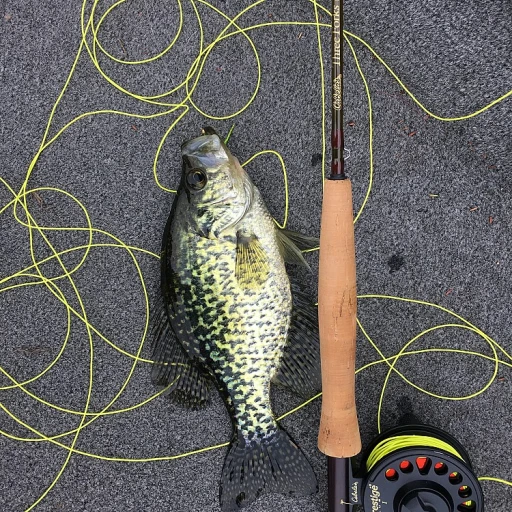
-large-teaser.webp)
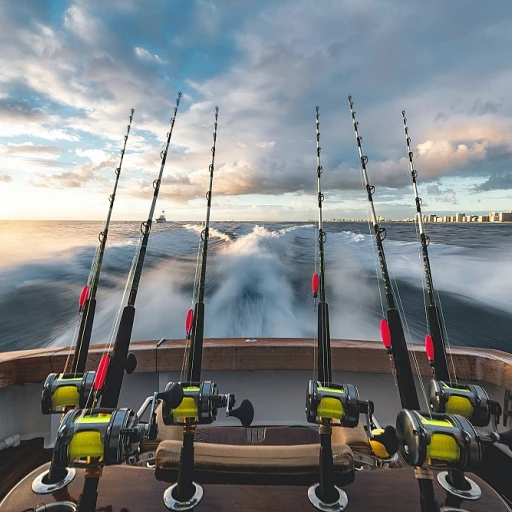

-large-teaser.webp)


